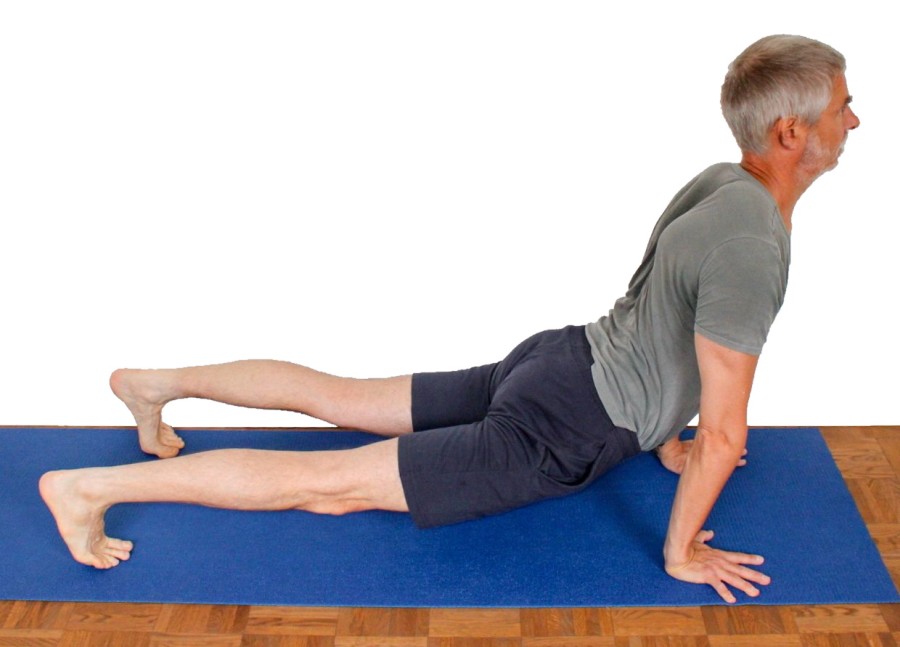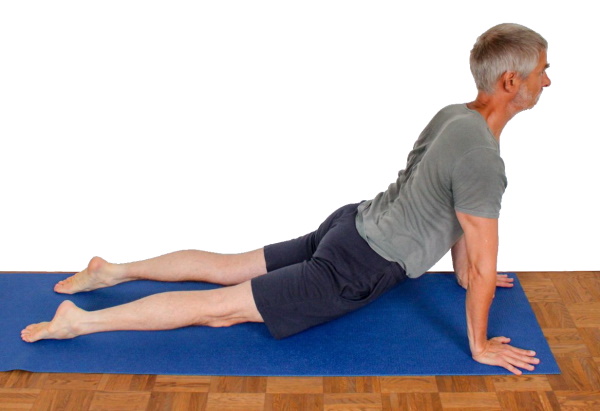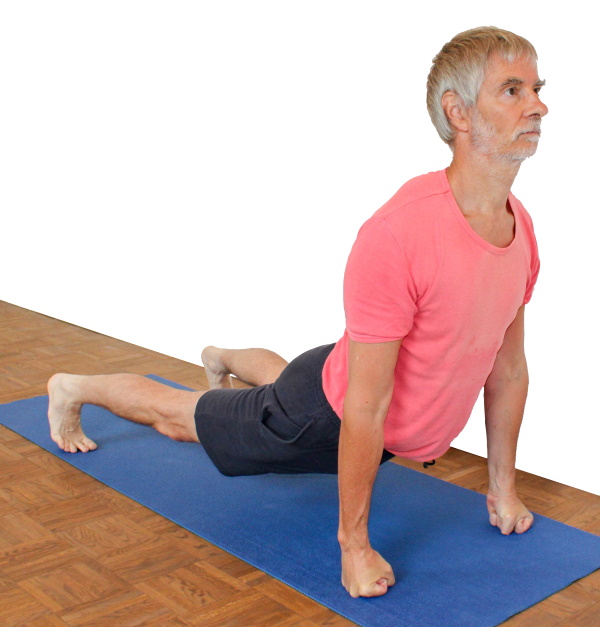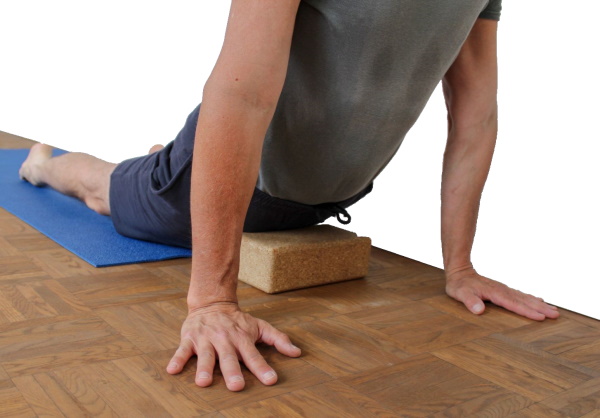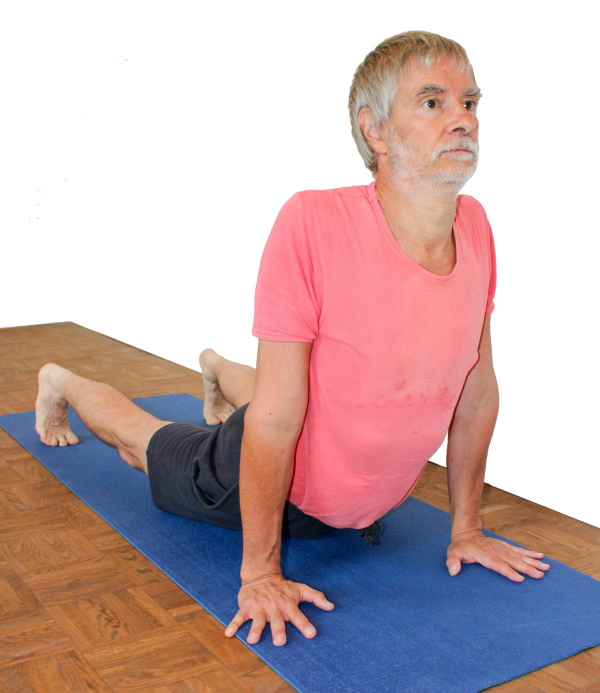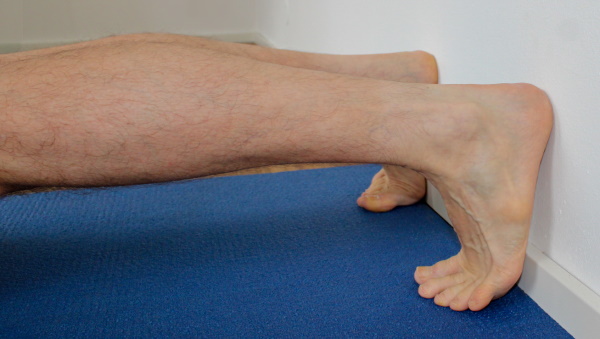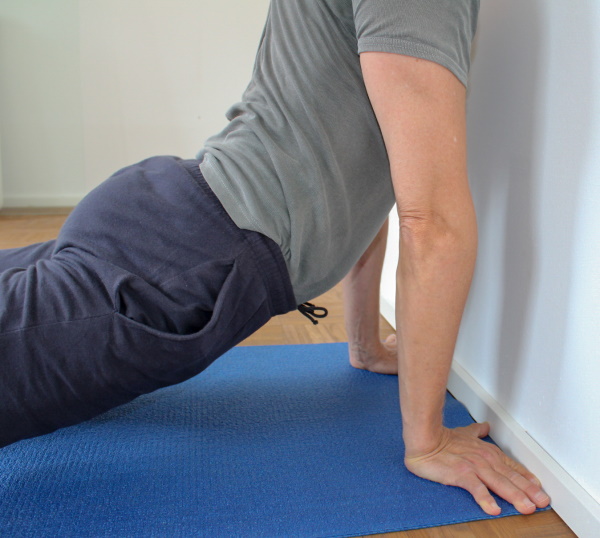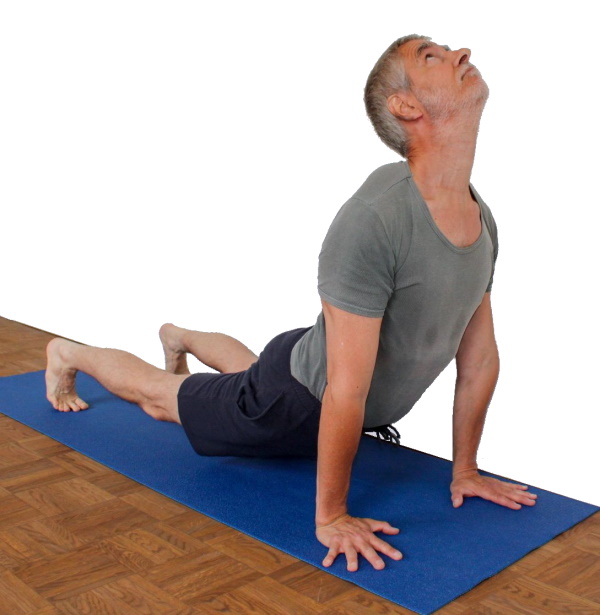- take downface dog on fingertips
- come up slowly and cautiously in the upface dog, if the pressure in the fingers allows it.
|
- Here the pose is described from upface dog, because in the transition to upface dog
the increase of pressure or force in the fingers can be felt exactly and until reaching
upface dog, if necessary, the attempt to take it can be aborted without danger
if it really feels like the fingers might not be able to withstand the strain.
- As in downface dog, the finger joints are held high and the fingers are placed quite
close to each other on the ground, so that the finger base joints remain at 180° angle
and the fingers remain halfway steep, which reduces the bending momentums. Basically,
these momentums are quite high in this pose and the steeper the fingers are, i. e.
the closer the fingertips are to each other and to the thumb, the better. Press your fingers together
with all your strength to absorb at least some of the forces/momentums acting towards
overstretching of the finger joints. Hold the hand turned 10° - 20°, i. e. the tendons
of the middle fingers diverge slightly.
- If on the way from the downface dog into the upface dog, it becomes apparent that the
fingers might not be able to hold the load, go back into the downface dog.
Practical experience shows that in all cases where it was possible to make the
decision that the fingers should/would hold the strain, they did hold. Nevertheless,
the strain and the force to be applied by fingers, hand and forearm is extremely high.
In other words, this is a very high level of strength that should be treated with respect!
- The overstretching in the finger joints should remain moderate. In cases of high overstretching
ability in the finger joints as well as especially in the thumb joints,
if the force necessary to avoid excessive overstretching is not available,
this posture should be dispensed
- Maybe a very intense sensation occurs not only during the posture but also a short time
afterwards in the fingers. Persistent pain for a long time afterwards, however,
is not normal or tolerable.
- In contrast to upface dog, the pressure in the fingers is felt here much more intense.
In the order of training the fingers, the downface dog would be the first, the second
would be upface dog, then you would try stick pose, then the rectangular handstand,
in which already all body weight lies on the fingers of both hands,
even after that the ardha vasisthasana, in which more than 50% of the body weight
rests on one hand and only afterwards the handstand, in which again only 50% rests
on each hand, but dynamic forces occur, which, when taking the aforementioned poses
hardly occur and with a slow, attentive build-up should be negligibly small in handstand
Here's the recommended sequence again as a list:
- downface dog
- upface dog
- stick pose
- rectangular
- ardha vasisthasana
- handstand
| known issues that can occur even when running correctly | - intense sensation in the fingers
intense sensation in the fingers is normal,
Depending on the force in the finger flexors,
this can be limited or occurs pronounced
|
|
